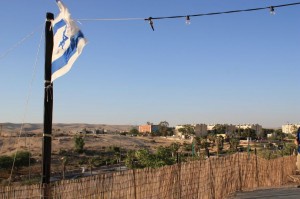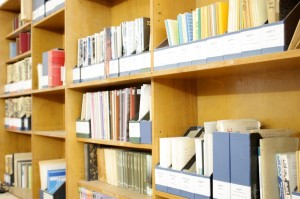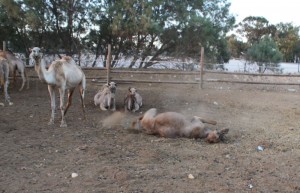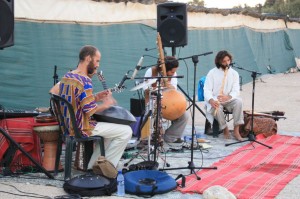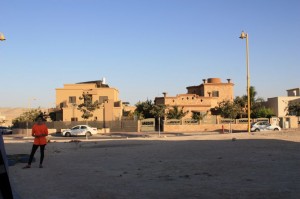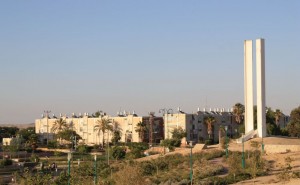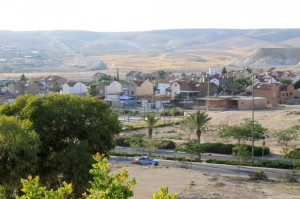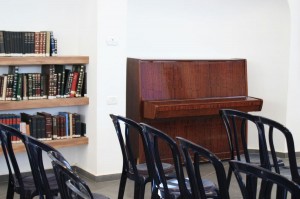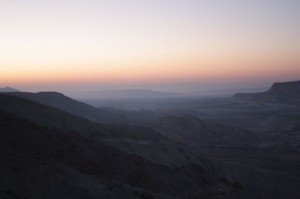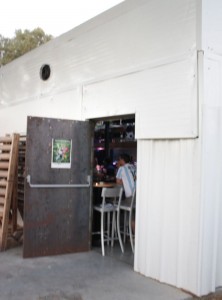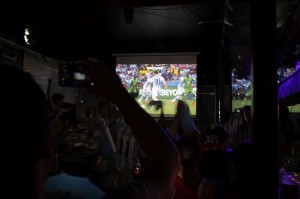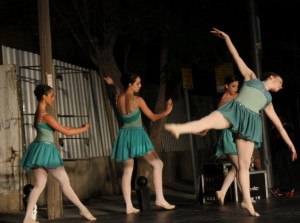I had a chance to visit the Negev desert again. It was very different from my previous journey there.
Sde Boker is home to one of the Ben Gurion University campuses, the Ben Gurion Research Institute and the Ben Gurion archive. There are more things named after David Ben Gurion, Israel’s founding father, than there are things named after Heydar Aliyev in Baku (Azerbaijan) 🙂 Israel even has a special Ben Gurion law, passed in 1977 in order to commemorate his legacy and distribute the tasks for the preservation of his heritage. The archive, for example, stores all his correspondence and everything written about him. It invites researchers to make use of its large collection. There are various documents in multiple languages, conveniently divided by years. Attending a workshop there was actually the reason why I visited Sde Boker again.
I had a chance to visit Sfinat ha’midbar (the desert ship), which for people from my academic field (sociology/anthropology) embodies the idea of crafted authenticity for the purpose of attracting tourists. It is a large open-air area with Bedouins serving tea, and with a camel enclosure.
We listened to a live band and enjoyed a chilly night.
The status of the Bedouin minority in Israel is somewhat similar to the status of the Roma in Europe. They are certainly not all nomadic, but they shun government control and bureaucracy. Many live in unrecognized settlements without sewage and water. There are various plans to relocate them into urban settlements, which are met with resistance. However, many businesses in the area seem to recognize the huge potential of Bedouin lifestyle for tourism in South Israel.
One day we also went to the town of Yerucham, which belongs to the category of so-called development towns, which many of the towns’ people dislike. These towns were built as agricultural or industrial centers. There are nuclear facilities (so a zeppelin flies over the town guarding them) and a textiles factory in the town. With concerted effort of the municipality and various activists, we were told, the level of school completion rose over the past years, unemployment rate decreased, and, unlike many small towns, Yerucham enjoys a positive demographic balance.
I like this picture because it looks like a turned page.
But not all houses look like these.
The large thing is a statue of identity, designed to be visible from afar. Yerucham is a place where religious, somewhat observant and secular communities (including from ex-USSR, mainly from Ukraine and Central Asia) have to share the space.
There is also a large nature reserve, home to hundreds of species of birds. From up high one can see older and newer houses, as well as parts of Bedouin settlements surrounding the area. An agreement was recently reached to resettle many Bedouin families to an urban settlement – and exchange of land for water, sewage and education.
This is where we visited – it’s unusual to see a piano in Israel.
To end the short story, here’s another unforgettable sunrise on the Negev.
I made a brief stop at Be’er Sheva. My Couchsurfing hosts took me to this pub to watch the World Cup.
Inside this structure that looks like a large box, a huge group of Argentinian soccer fans assembled to support their team – and celebrate its victory. The small bar was exploding with songs. The next morning I woke up with one of the refrains on my mind, “Vamos vamos a ganar”
There was also a festival in Be’er Sheva, where various groups and clubs where showing what they do best. This is a classical ballet performance on a makeshift stage.
Now, being in Tel Aviv and feeling too lazy to move because of humidity, I miss the hot and dry weather of the Negev.


